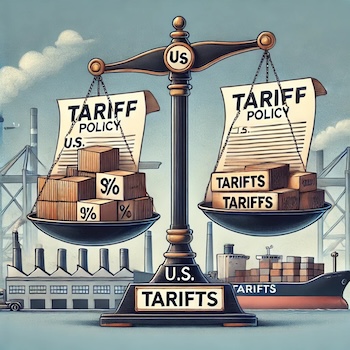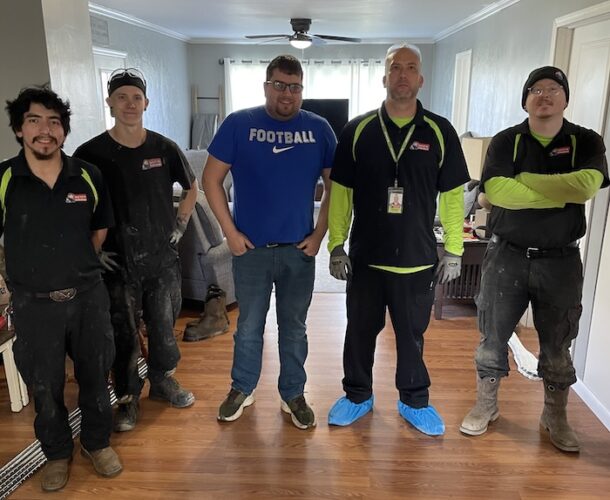https://vimeo.com/1044815145 Most of the country is experiencing a cold snap, extending its way as far south as Texas. In the northern climates snow and an icy grip has taken hold. And while it’s great for the plumbing and heating techs and installers, be careful out there and take the precautions to perform your job effectively Read more
construction

Most of the country is experiencing a cold snap, extending its way as far south as Texas. In the northern climates snow and an icy grip has taken hold. And while it’s great for the plumbing and heating techs and installers, be careful out there and take the precautions to perform your job effectively and safely. On this weekly update we’ll talk outer wear, Trump 2.0, new podcasts, and did you know that today is quitting day?
Trump 2.0
Heat Pump Water Heater
Podcasts

https://vimeo.com/1038401163 Welcome back to our weekly update. Another Friday the 13th? Oooph. I hope everyone gets through the day without any black cats, walking under ladders, you know the drill. What are you superstitious about? We hope you have a great day, nonetheless. On this update, we’ll talk heat pump water heaters, the effects of Read more
Welcome back to our weekly update. Another Friday the 13th? Oooph. I hope everyone gets through the day without any black cats, walking under ladders, you know the drill. What are you superstitious about? We hope you have a great day, nonetheless. On this update, we’ll talk heat pump water heaters, the effects of potential tariffs from the new president, and our new podcasts.

There has been some tough rhetoric coming out of president-elect Trump’s camp regarding tightening the screws on imported goods by implementing a hefty tariff on countries such as China, Mexico and Canada, to name a few. Is this a good attempt to bring more manufacturing stateside? How will this affect the economy? Is this even Read more
 There has been some tough rhetoric coming out of president-elect Trump’s camp regarding tightening the screws on imported goods by implementing a hefty tariff on countries such as China, Mexico and Canada, to name a few. Is this a good attempt to bring more manufacturing stateside? How will this affect the economy? Is this even a good idea? We talk to some industry leaders about tariffs and what it means for the U.S. economy moving forward.
There has been some tough rhetoric coming out of president-elect Trump’s camp regarding tightening the screws on imported goods by implementing a hefty tariff on countries such as China, Mexico and Canada, to name a few. Is this a good attempt to bring more manufacturing stateside? How will this affect the economy? Is this even a good idea? We talk to some industry leaders about tariffs and what it means for the U.S. economy moving forward.
Recently, on the Crosstalk episode of the Make Trades Great Again and Appetite for Construction podcasts, this very topic came up and Andy Mickelson, Mickelson Plumbing and Heating, Missoula, Mont., and Eric Aune, Aune Plumbing, Zimmerman, Minn., were in unison in their view on tariffs. “There will be an impact,” says Mickelson. “Every single item that we touch has some impact from an imported product or good. And to sit back and believe that it’s not going to have a day-to-day impact or a cost increase is foolish.”
“It’s a tax that’s going to kill sales; it’s definitely going to affect us moving forward, especially if we see higher tariffs,” says Aune.
Mickelson continues, “There’s going to be a ‘trickle up’ effect, and along with that we’re going to see a lack of material … we saw brief chunk of this in 2021 when we had the port issues and shipping problems, and you extrapolate that into that into that these items aren’t coming because they are too expensive, how do you get around that? You can’t just flip a switch and just say we’re just going to make it here. We’re not ready for that, and I don’t think that this country is ready to become a manufacturing country. I don’t think there enough people who are willing to work on the assembly line … we can’t get people to sign up right now to become a plumber or an electrician or a data communication person—any of those manufacturing-type jobs are very much so in line with what it means to go out and work with your hands, be in a skilled trade.”

So, the back-and-forth debate continues to brew relating to whether instituting tariffs is beneficial to the American economy and the American worker. Dain Hansen, Executive Vice President, Government Relations, The IAPMO Group, says that economists have different views on the topic of tariffs, but the plumbing industry is well-positioned to support continued domestic production of what our country needs—and increase U.S. exports to other countries.
“Any policy that strengthens our manufacturing muscle is good for the economy and increases job opportunities in the trades. Programs such as the Market Development Cooperator Program and Standards Alliance at USAID, along with the Department of Commerce’s Foreign Commercial Service, provide vital support to U.S. exporters. We hope the administration will continue backing these programs to ensure U.S. products remain competitive overseas. We continue to monitor the impact tariffs are having on our global industry as manufacturing move locations to avoid these costs,” says Hansen.
While IAPMO is cautiously optimistic and vigilant, Plumbing Manufacturers International (PMI) shares concern. “During his campaign, President Trump spoke about his desire to increase tariffs—as high as 60% on Chinese goods, 10% to 20% across the board on all foreign goods, including Europe, and 25% on imports from Mexico, unless they curb the number of immigrants coming across the border. If he’s successful, these tariffs will have an inflationary impact, increasing the costs of production and in turn the costs of products in the marketplace. That’s certainly one of the biggest concerns plumbing manufacturers have right now.
“Our stance on this issue all along is that tariffs are harmful to the economy because they increase costs for manufacturers and have an inflationary impact on customers wishing to purchase plumbing products. These increased costs lead manufacturers to provide fewer jobs and they have less money for compensation as well. From an economic standpoint, we see no benefits from tariffs. PMI has always been an advocate for free and fair trade among nations,” says Kerry Stackpole, CEO and Executive Director, PMI.
According to Ben Brubeck, Vice President of Regulatory Labor and State Affairs, Associated Builders and Contractors (ABC), tariffs are a negotiating tool to renegotiate policies with other countries. “While having a hard time getting materials from overseas, resolving the domestic supply chain is a good thing.”
Upcoming courses will give contractors insights and best practices to succeed in an increasingly competitive market. Seattle—Business Development Resources (BDR), a trusted provider of business coaching and training services for the HVAC, plumbing, and electrical industries, announces its upcoming lineup of virtual contractor training courses to help enhance home service business growth in the coming Read more
Upcoming courses will give contractors insights and best practices to succeed in an increasingly competitive market.
Seattle—Business Development Resources (BDR), a trusted provider of business coaching and training services for the HVAC, plumbing, and electrical industries, announces its upcoming lineup of virtual contractor training courses to help enhance home service business growth in the coming winter season.

These sessions cover a wide array of essential topics, offering actionable insights and strategies to drive profitability, improve customer relations, and streamline operations. “The home services market is becoming more competitive every year,” said Matt MacArthur, Sr. Vice President of Training at BDR. “For that reason, we’re offering a full slate of educational courses to help contractors close out 2024 strong and start 2025 on the right foot.”
With 10+ virtual training events over the next four months, BDR provides contractors access to a wide range of information vital to the growth and success of their business. Topics in these upcoming trainings cover all areas of a contractor’s business, including:
- Mastering Productivity: Strategies for Prioritization, Time Management, & Delegation (December 18, 2024)
This power-packed class offers practical tools and resources for improving productivity to help attendees gain control over their day and allow them to be more effective in their lives and job roles. - The Home Service Blueprint: 5 Core Pillars for Building Your Dream Business (January 9, 2025)
In this one-day intensive workshop, business owners and managers will learn five foundational strategies to increase profitability and success and immediately enhance their HVAC and plumbing business. - Top Gun Technician Excellence: Beyond Diagnostics (January 30-31, 2025)
In this session, service technicians learn the soft skills to perform their jobs better, driving customer satisfaction, sales leads, and referrals through a defined service delivery procedure. - Customer Experience University (February 6-7, 2025)
This course teaches sales and install coordinators a structured retail process to help build long-lasting customer relationships, close more appointments, and position the company for referrals.
“The way the home service industry operates has changed dramatically over the last decade,” MacArthur said. “In order to remain competitive, contractors must adapt to increased consumer expectations. From office management to improving point-of-sale opportunities, these training courses can help position business owners for growth and expansion as the market changes.”
For more information about BDR’s upcoming contractor training schedule, visit https://www.bdrco.com/upcoming-bdr-events/.
Columbus, Ohio — Buckeye Heating, Cooling & Plumbing, a leading heating, cooling and plumbing company serving greater Columbus, is proud to announce it is providing a complimentary Carrier home heating and cooling system to an outstanding local educator. Since 2022, Buckeye Heating, Cooling & Plumbing has provided a free heating and cooling system to an Read more
Columbus, Ohio — Buckeye Heating, Cooling & Plumbing, a leading heating, cooling and plumbing company serving greater Columbus, is proud to announce it is providing a complimentary Carrier home heating and cooling system to an outstanding local educator. Since 2022, Buckeye Heating, Cooling & Plumbing has provided a free heating and cooling system to an educator within its service area.
This year, a free Carrier home heating and cooling system is being given to Reid Parrett, an intervention specialist at Franklin Heights High School. Parrett has a history of helping students both during and after-hours to ensure every student has what they need to succeed. In addition to teaching within her school, Parrett volunteers at her church’s nursery.

“Our teachers invest in local youth every day. Today, we are so proud to invest in one of them,” said Mike Roszkowski, President of Buckeye Heating, Cooling & Plumbing. “Supporting a local educator each year is something we are incredibly proud of here at Buckeye. We are thrilled to celebrate Ms. Parrett and the contributions she makes in the classroom.”
Buckeye Heating, Cooling & Plumbing’s teacher home comfort system giveaway is part of its MAX Gives initiative that focuses on charitable contributions to the communities in which the company serves. Other initiatives have included HVAC giveaways to families in need, water heater giveaways to first responders and community volunteers, monetary contributions to local charities, scholarships to deserving high school seniors, and donations to local families in need during the holiday season.
